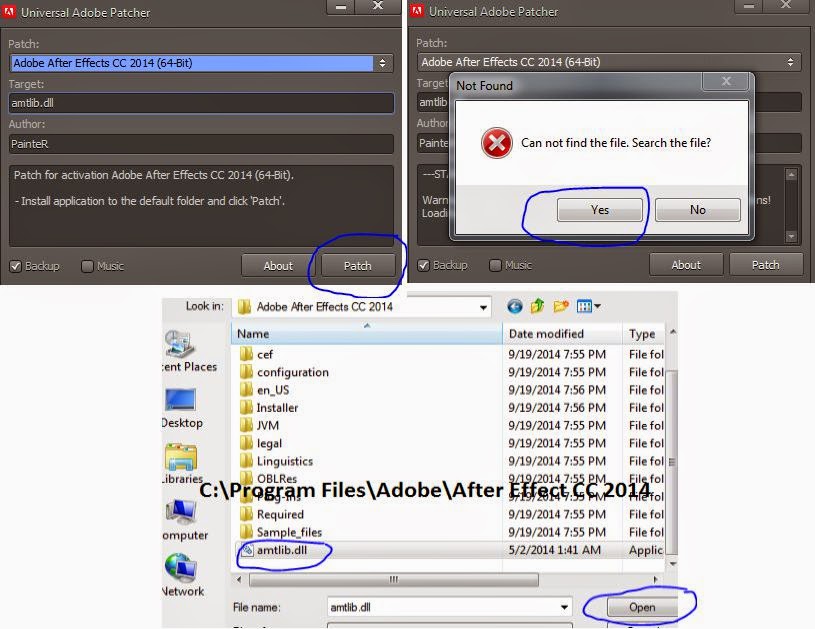Did your computer fail to open a PATCH file? We explain what PATCH files are and recommend software that we know can open or convert your PATCH files.

- 10.x products introduce cumulative updates, so it's never necessary to install more than two updates to get to the latest version. Mac OS updates are a.PKG installer contained in a.DMG. Acrobat and Reader updates are a.PKG installer contained in a.DMG. For the English version of Reader, a full.
- Free Download Adobe Photoshop Cs6 Crack and patch file from here. Download cs6 Crackand Patch.rar free. In This Post You will get the following tool to activate your.
- Apr 26, 2011 I agree with u but for the growl part. I don't think adobe installs that, do they? They may put in an extension so growl picks up adobe activity, but growl is very cool, unlike these patch files. Does anyone know if this could be the cause of air update failures in CS5? I am tempted to just delete them, as the updater is not working anyway.
- Files from a failed or removed installation take up disk space and can cause problems when you install or run a newer version of the Adobe application. Delete files from a previous Adobe application installation To delete files from a previous Adobe application installation, do the following: If the.
How do I clean Adobe Patch Files? Adobe Patch Files may store excess, temporary data on your computer that can take up valuable space. It may also store private data such as passwords or browsing history in the registry or on the file system.

What is a PATCH file?
Files that contain the .patch file extension are used by a variety of different software applications for program patches and software update purposes.
A software company will create and distribute a patch file that contains the data that is needed to update an application or fix a problem with the associated software program. Patch files may be used to fix software bugs, improve program usability, replace graphics or update software features.
Adobe Photoshop Patch File
These files ensure that a user is operating the most recent version of a software application and that bugs and errors have been addressed in the software they are running.
Adobe Acrobat Patch
Software that will open, convert or fix PATCH files
Adobe Patch Files Folder
Try a universal file viewer
Try a universal file viewer like Free File Viewer. It can open over 200 different types of files - and most likely yours too. Download Free File Viewer here.
About File Extension PATCH
File.org aims to be the go-to resource for file type- and related software information. We spend countless hours researching various file formats and software that can open, convert, create or otherwise work with those files.
If you have additional information about the PATCH file format or software that uses files with the PATCH suffix, please do get in touch - we would love hearing from you.
Learn how to delete files that are installed during a failed installation, or that are left behind when an application is removed.
Files from a failed or removed installation take up disk space and can cause problems when you install or run a newer version of the Adobe application.
Delete files from a previous Adobe application installation
To delete files from a previous Adobe application installation, do the following:
If the Adobe application folder exists, drag it to Trash. By default, the folders are located in the Applications folder on the hard disk.
Drag the preferences folder to Trash from the Users/[User]/Library/Preferences folder. (For example, drag the Acrobat folder to Trash.)
Note:
The user Library folder is hidden by default in Mac OS X 10.7 and later releases. To access files in the hidden library folder, see How to access hidden user library files.
Drag the application PLIST file, located in the Users/[User]/Library/Preferences folder, to Trash. Skip this step if the Adobe application doesn't include a PLIST file.
If you don't have other Adobe applications installed on your computer, drag each of the Adobe folders to Trash from the following locations:
- Users/[User]/Library/Application Support
- Library/Application Support
Empty Trash. If you receive an error message while trying to empty Trash, see the next section.
If you receive a message that items are locked and cannot be deleted, press Option and then empty Trash.
If you still receive a message that the item is in use, do one of the following:

- Quit the app that you were using with the file and then empty Trash.
- Restart your Mac and then empty Trash.
- Start your Mac in safe mode by holding down the Shift key while your Mac starts up. Then empty Trash and restart your Mac normally. For more information, see Use safe mode to isolate issues with your Mac.
Jannat 2 songs download mp3. Twitter™ and Facebook posts are not covered under the terms of Creative Commons.
Legal Notices Online Privacy Policy